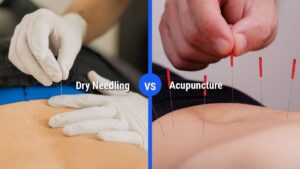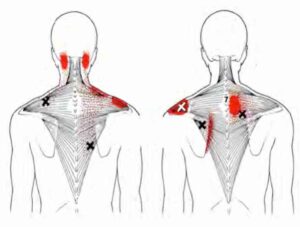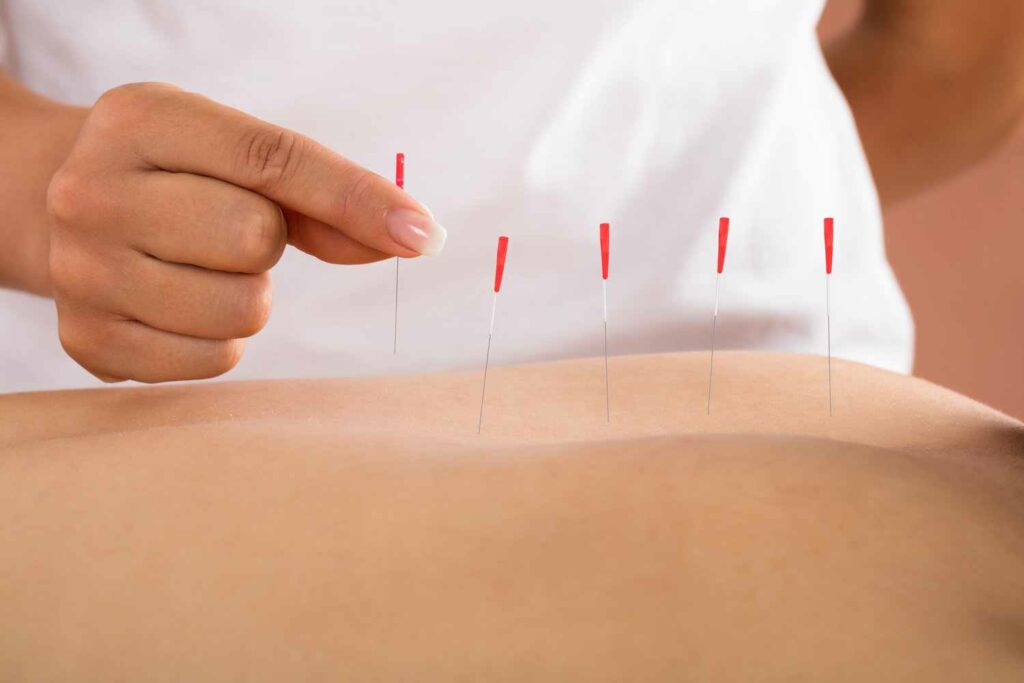Dry needling is a relatively new treatment option that is growing in popularity. It is used to treat a variety of conditions, including muscle pain, tension headaches, and migraines. But what is dry needling? And how does it work? In this blog post, we will answer all of your questions about dry needling!
Contents
What Is Dry Needling?

Dry needling is a form of physical therapy that involves using very thin needles to target certain areas of the body. These needles are inserted into muscles, tendons, and ligaments to relieve pain and treat various conditions.
Unlike acupuncture, which uses these needles for more traditional Chinese healing practices, dry needling is based on modern medical science. The goal of dry needling is to relieve tension and constriction in certain areas of the body, which can help reduce pain and improve mobility.
Is Dry Needling Painful?
One of the most common questions that people have about dry needling is whether or not it is painful. The answer to this question depends on the individual. Some people find dry needling quite uncomfortable. While others barely notice any discomfort at all. However, there are some things that you can do to minimize any potential pain and discomfort.
Additionally, you can try applying a cold compress or ice pack after your session to soothe any residual soreness or discomfort. Overall, dry needling can be an effective way to manage pain. The initial feeling of the needle piercing your skin is very minimal much less than getting a vaccination or having blood drawn. Once the needle reaches the muscle, you will feel a twitch sensation that is similar to a deep cramp but doesn’t last long.
So if you are considering dry needling as a treatment option, be sure to talk to your practitioner about your specific needs and preferences. With the right approach, this powerful treatment can help you achieve relief from pain and other symptoms in no time.
How Does Dry Needling Work?
Dry needling is a specialized form of acupuncture that involves the insertion of very fine needles into specific areas of the body.
- These needles stimulate trigger points and tight muscle bands to relieve pain, reduce inflammation, and improve mobility. It lasts for a short period, typically 20-30 minutes The sessions needed for dry needling vary depending on the individual and the severity of their condition.
- Unlike traditional acupuncture, dry needling does not involve any energy work or other types of therapeutic modalities. Instead, it focuses solely on targeting specific areas of tension and knots in the muscles to achieve pain relief and healing.
- Dry needling does not involve any external stimuli or energy work. Instead, it relies solely on the insertion of needles to achieve its therapeutic effects. The exact mechanisms behind dry needling are still not fully understood.
If you are experiencing chronic pain or tightness in your muscles, dry needling may be a good option for you. It is safe, non-invasive, and can provide significant relief from your symptoms. So if you are interested in trying out this powerful healing modality, talk to your doctor or physical therapist today! They can help guide you through the process and answer any questions you may have about this treatment. And with the right care, you can be on your way to a healthier and happier life!
What Is The Main Difference Between Acupuncture And Dry Needling?

Dry needling is a form of alternative medicine that involves inserting thin needles into the body to relieve pain and treat other health conditions. Unlike traditional acupuncture, dry needling uses shorter needles and targets specific trigger points on the body instead of focusing on a meridian system or energy flow.
- While they are both based on the principles of traditional Chinese medicine, acupuncture focuses on the overall energy flow in the body, while dry needling targets specific problem areas.
- Additionally, dry needling uses smaller needles that are inserted much more quickly than acupuncture needles. For example, dry needling is often used to treat conditions like chronic pain, muscle tension, and sports injuries.
Overall, if you are looking for a more targeted approach to healing your body and relieving pain, then dry needling may be the right choice for you. To learn more about this powerful form of alternative medicine and how it can help you heal and feel better, talk to your doctor or a trained professional today.
What Are The Benefits Of Dry Needling?

There are various benefits of dry needling. They are as follows:
Relieve pain
Dry needling can help to relieve pain and increase flexibility in the muscles. This is especially useful for people with chronic muscle tension or tightness, as it can help to relax these tense areas and reduce discomfort. For instance, if you have been dealing with chronic pain in your back or neck, dry needling can help to ease these symptoms and improve your overall quality of life.
Increase muscle strength and endurance
Another benefit of dry needling is that it can help to strengthen and improve the endurance of your muscles. By targeting specific trigger points and releasing tension within the muscles, dry needling can help to improve your overall muscle function and make it easier for you to perform physical activities.
Improve circulation
Dry needling can also improve circulation in the body, which helps to deliver more oxygen and nutrients to the muscles. This can lead to faster recovery and reduced muscle soreness. For instance, if you have been struggling with poor circulation or a lack of oxygen in your muscles, dry needling can help to address these issues and give you the boost that you need.
Reduce inflammation
Additionally, dry needling may help to reduce inflammation in the body, which can further improve pain relief and healing. By targeting specific trigger points in the muscles, dry needling can help to break up knots or tension that are causing pain and stiffness.
Overall, there are many benefits to be gained from dry needling. Whether you are dealing with chronic muscle pain or inflammation, dry needling can help to alleviate these symptoms and improve your quality of life. So if you’re looking for a safe and effective way to manage your pain, consider giving dry needling a try!
Are There Any Risks Or Side Effects?
While dry needling can offer many benefits, it is important to be aware of the potential risks and side effects that may come with this treatment.
Some common side effects include soreness or stiffness in the muscles, bruising at the needle site, headaches, or dizziness.
In some cases, dry needling may also cause adverse reactions in people who are allergic to the needles or any of the other materials used during the treatment.
Therefore, it is important to consult your doctor before undergoing dry needling and to disclose any allergies that you may have.
Overall, while there are some risks associated with dry needling, this treatment can be a safe and effective way to manage your pain and improve your overall quality of life. If you are considering trying dry needling, be sure to do your research and consult with a qualified healthcare professional first.
Conclusion
It may be concluded that dry needling is a highly effective treatment method that can help to relieve pain, reduce inflammation, and improve mobility in patients with all kinds of musculoskeletal conditions. Whether you have a sports injury or chronic pain from arthritis or fibromyalgia, dry needling is an excellent option for managing your symptoms and achieving better health overall.
If you are interested in trying dry needling for yourself, it is important to work with a qualified practitioner who has experience using this technique. There are many different types of dry-needling practitioners out there, so do your research and find one that you can trust to deliver the best results.
Physical Therapy help patients recover from pain. If you’re experiencing Back pain, Shoulder pain, Knee pain, Neck pain, Elbow pain, Hip pain, or Arthritis pain, a physical therapist at MantraCare can help: Book a physiotherapy session.


